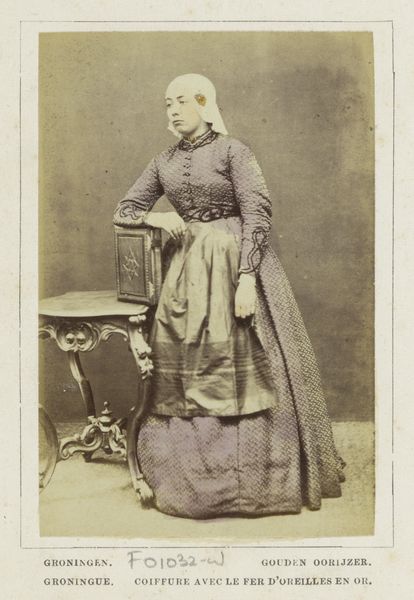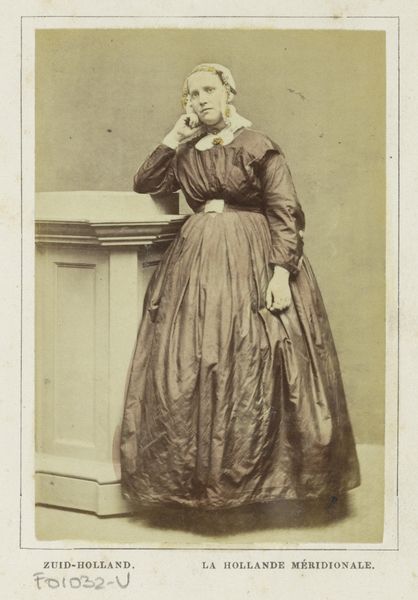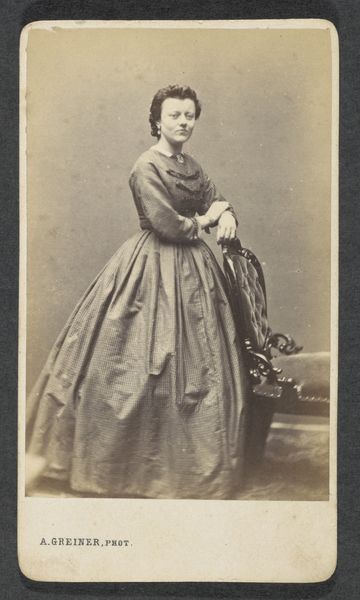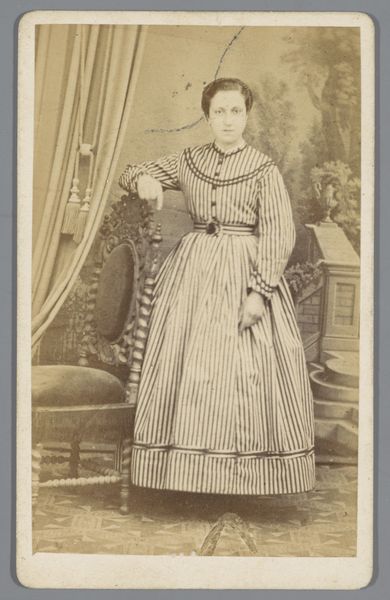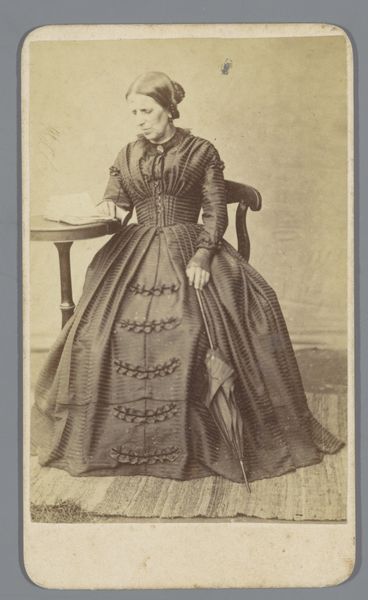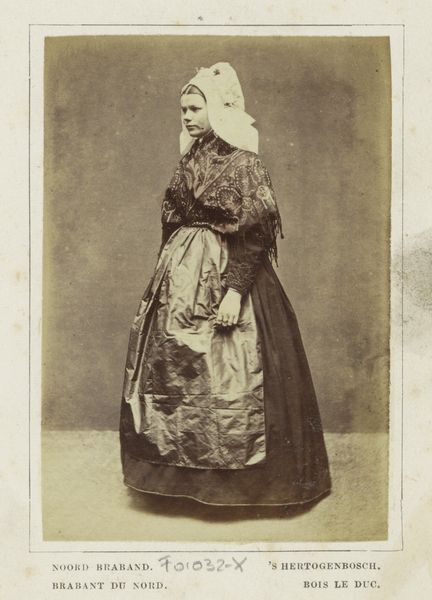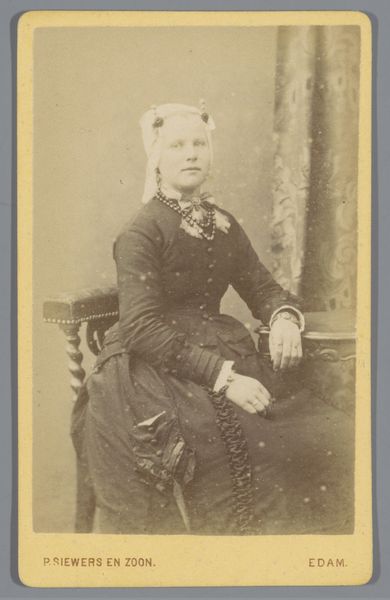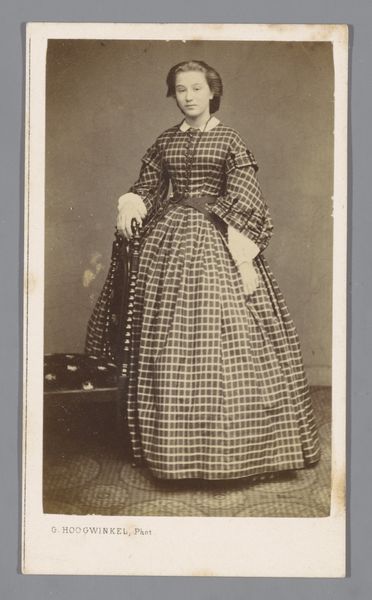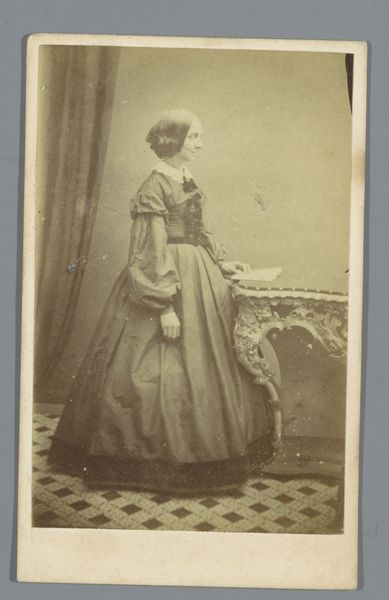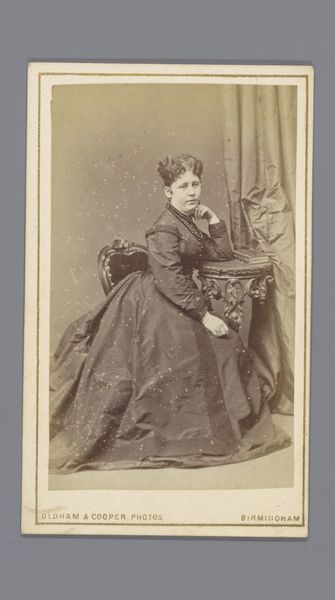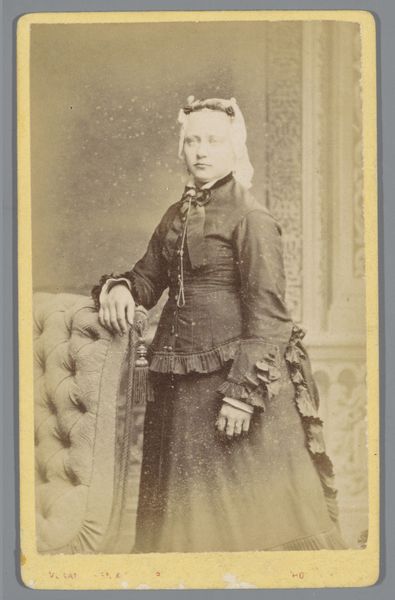
Portret van een onbekende vrouw in klederdracht van Krommenie, Noord-Holland 1860 - 1890
0:00
0:00
Dimensions: height 86 mm, width 59 mm
Copyright: Rijks Museum: Open Domain
Curator: Here we have a photograph, "Portret van een onbekende vrouw in klederdracht van Krommenie, Noord-Holland," created sometime between 1860 and 1890. Editor: It’s captivating. The subdued palette and the woman’s static pose against that simple balustrade give it an almost haunting quality. Curator: Indeed. This photographic portrait invites us to consider the representation of women in 19th-century Dutch culture, especially concerning regional identities. The woman's costume from Krommenie in North Holland marks her affiliation with that community and its specific customs. What do you think about that sartorial construction? Editor: The dress and headpiece strike me first as formal constraints—a visual code meticulously arranged, almost symmetrical. Notice how the dark apron visually anchors her in the frame. Curator: These photographs served as powerful signifiers. Wearing distinctive clothing allowed women from smaller villages to visually represent their place within the larger social fabric of the Netherlands. These traditional clothes represented both pride and possibly social limitations, as people were easily identifiable based on their garments. Editor: So, through its composition, the image constructs not only the woman's image but also the very idea of belonging. But who was the artist? Do we have information? Curator: The photographer is currently unknown. Nevertheless, its formal properties evoke the pictorial language of its time, such as Romanticism, where an idealized portrayal was common. Editor: The use of sepia tones flattens the depth and gives the image a timeless aura despite being rooted in a particular time and place. But to understand this better, it needs social historical analysis. What was it like to be a woman during that time? Was there political symbolism at play in displaying traditional folk costume? Curator: Such analysis allows us to go beyond a superficial reading and grasp the portrait’s richer cultural significance. In representing this woman in her distinctive dress, the photograph makes a statement about both individuality and the complex realities and customs defining the cultural context. Editor: Ultimately, it demonstrates how careful examination of form enhances an appreciation for social and political realities. Curator: Precisely, understanding these connections deepens our appreciation for the photography and cultural implications, expanding the stories and voices we allow within museum walls.
Comments
No comments
Be the first to comment and join the conversation on the ultimate creative platform.
